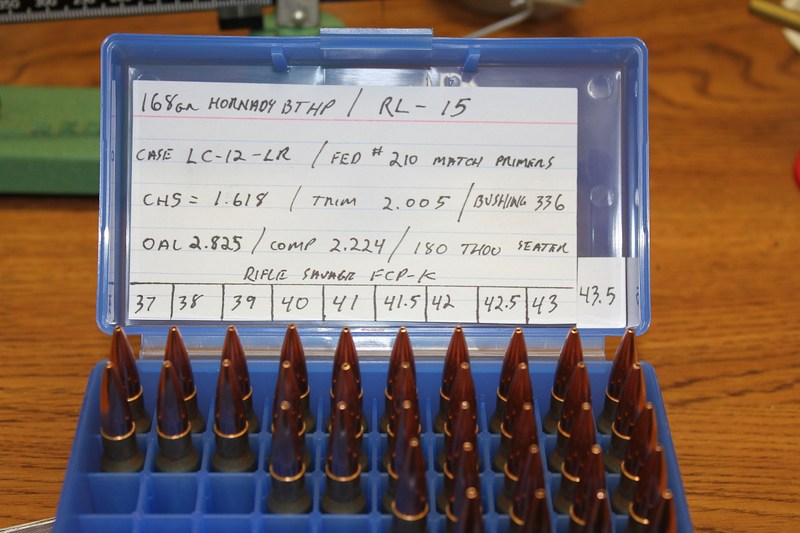jmr40 said:
A chronograph is only $100 and situations like this is why they are worth the money. By the time you start getting sticky bolt lift you are WAY over max pressure.
If your load manual says a max load will be 3000 fps with 45 gr of powder then the 3000 fps number is what you pay attention to. With individual rifles 45 gr of powder will match the books and give you 3000 fps.
But with other rifles you may reach 3000 fps at only 43 gr of powder and 45 gr may give you 3100-3200 fps and be a dangerous overload. In that rifle 43 gr is a max load.
In yet another rifle 45 gr may only give you 2900 fps. In that case it would be safe to increase powder above book max until you reach 3000 fps. But I strongly advise against doing so. If that ammo found its way into another rifle it could be dangerous.
I use a chronograph when developing loads and stop adding powder when velocity starts getting close to what the load manuals say should be the velocity I get with a max load. Or when I reach max powder charge. Whichever comes 1st.
That's really not right. It probably won't cause actual damage in most instances (won't go over proof level), but it isn't a way to control peak pressure except in one specific set of circumstances in which:
1. Your barrel is equal to or longer than the test barrel.
2. Your charge weight is equal to or higher than the published load for the velocity.
If you achieve the published velocity in the published test barrel length with LESS powder than the published charge for that velocity, then
your peak pressure is higher than the published load's peak pressure was.
The above is not obvious, but here is the cause: When two bullets reach the same muzzle energy in the same barrel length, then the
average pressure they experienced in the barrel starting from the chamber and including all the changing pressure levels averaged out over the bullet's trip down the tube and until it clears the muzzle. The
peak pressure, which is the one we worry about for safety, is only a portion of that average, as is the muzzle pressure, and these don't change in proportion to the average pressure as you alter the powder charge. A given average pressure can be achieved by:
1.) A combination of a high peak and a low muzzle pressure, or,
2.) A combination of a low peak and a high muzzle pressure.
Low and high are relative in those statements, and in this case relative to the peak and muzzle pressures the load developer saw.
The first one happens when you get to a given databook velocity using a faster (higher burn rate) lot of powder, thus finding you need a lower charge to reach that velocity than the book listed.
The second one happens when you get to a given databook velocity using a slower (lower burn rate) lot of powder, thus finding you need a greater charge to reach that velocity than the book author did.
The above is true because, with low muzzle pressure, more of the bullet's acceleration has to be garnered from the peak pressure and less comes from later pressure levels in the barrel, meaning the peak has to be higher to get the bullet to the same velocity. A lower powder charge produces less gas and therefore lower muzzle pressure when expansion completes, so that's how you know its peak had to be higher to reach the same velocity. Vice versa applies as well.
What changes the relative burn rate can be differences in components, differences in your chamber dimensions, and, as I mentioned, differences in your powder lot's burn rate. Whatever the cause, the principle of peak to muzzle pressure ratios applies and you need to be warry of a velocity that is achieved with less powder in a same-length barrel or if you need the same amount of powder to reach the claimed velocity, but your barrel is shorter than the test barrel was. Either situation means your peak pressure is higher than the occurred in the load test.
Robinny,
An old rule of thumb has been that if you get a beginning hint of sticky bolt lift or sticky case extraction as part of a load work-up, you should back the charge down 5%. The sticky extraction sign applies to all types of firearms. That number should give you a sense of what those symptoms indicate and how far above the happy pressure range you are getting.
As to how fast the sticking event develops, it is generally in about half a millisecond from the time the powder burn gets seriously under way.


